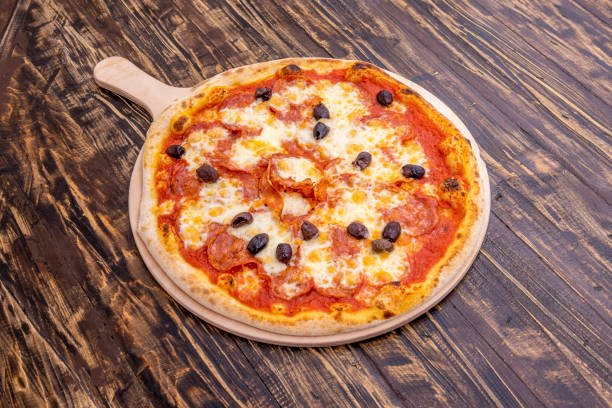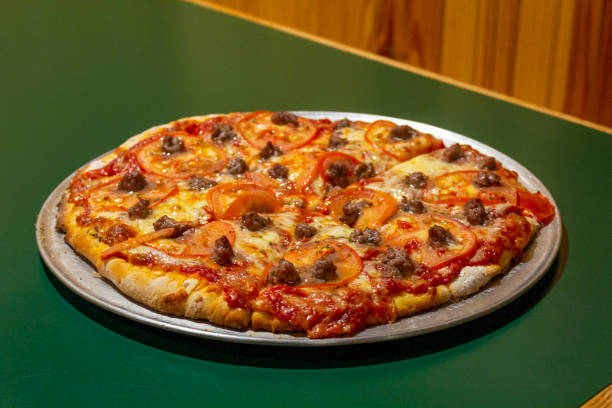Embarking on the savory journey of exploring the dimensions of a 10-inch pizza, one delves into not just a culinary exploration but a mathematical one as well. A 10-inch pizza, often seen as the perfect size for personal enjoyment or sharing between a couple, holds more complexity than meets the eye. This article aims to unravel the mystery behind the size of a 10-inch pizza, ensuring readers are equipped with the knowledge to make informed decisions about their next pizza order.
Understanding how big is a 10 inch pizza requires more than a simple measurement across; it calls for a dive into the area, the amount of dough used, and how toppings are distributed, affecting the overall eating experience. With an expert perspective on the topic, we delve into the nitty-gritty of pizza sizing, comparing the 10-inch option to its counterparts, and providing insights into how it translates to actual food quantity.
But why does this matter, you might ask? The value of understanding the true size and serving capacity of a 10-inch pizza goes beyond mere curiosity. It’s about making smarter choices for your gatherings, knowing exactly what to order for your family, and perhaps most intriguingly, uncovering the price-to-size ratio that best suits your appetite and budget.
As we unfold the layers of dough, cheese, and toppings, this article promises to not only satiate your curiosity but also enhance your pizza ordering experience. Whether you’re a pizza aficionado or someone who enjoys the occasional slice, the insights provided here will equip you with the knowledge to navigate the world of pizzas with confidence. So, let’s embark on this deliciously mathematical journey together and uncover the true essence of a 10-inch pizza.
Comparing Diameter and Surface Area

The size name of a pizza refers to its diameter. A 10-inch pizza has a diameter of, you guessed it, 10 inches. A 12-inch pizza has a diameter of 12 inches.
On the surface, just 2 inches may not seem like a very big difference. However, when you calculate the surface area of a circle based on its diameter, the difference becomes much more substantial.
- The surface area of a 10-inch pizza is about 78.5 square inches.
- A 12-inch pizza has a surface area of about 113 square inches.
That’s an increase of 44% more pizza. The 12-inch pizza is noticeably larger despite just a 2 inch difference in diameter.
So if you’re looking to get the most pizza real estate for your buck, the 12-inch offers a clear advantage in terms of sheer surface area and size.
Serving Capacity Depends on Size
How many people will each pizza size feed? This depends on a few factors:
- Number of slices – A 10-inch pizza typically yields 6-8 slices, while a 12-inch often has 8-10 slices. More slices means more servings.
- People served – A 10-inch pizza can comfortably feed 1-2 people. A 12-inch pizza can feed 2-3 people. Again, the larger size accommodates more.
*Of course, serving capacity also depends on individual appetites. One extra hungry person may polish off a 10-inch pizza alone. Similarly, if you have additional sides or appetizers, a 10-inch pizza may suffice for more people.
But in general, the 12-inch pizza will be better for larger groups due to its higher slice count and overall larger size. Families or big eaters will appreciate those extra slices.
More watching video: How to Cut a Pizza Into 10 Slices
Which Offers More Value?
Given its larger surface area and higher serving capacity, you may expect the 12-inch pizza to be significantly more expensive. However, this is often not the case – frequently, the price difference is marginal.
For example, a basic cheese pizza may cost $10 for a 10-inch and $12 for a 12-inch. That’s just a $2 difference despite getting 44% more pizza. In this case, the 12-inch is clearly the better value.
Of course, prices and discounts can vary between pizza places. But generally speaking, the 12-inch pizza tends to provide more pizza for your buck.
Toppings Distribution Depends on Size
How does pizza size affect the ratio and distribution of toppings? Another factor to consider:
- For toppings lovers, the 10-inch pizza concentrates toppings in a smaller area. This means more loaded mouthfuls of your favorite toppings in each bite.
- However, the 12-inch pizza provides more overall toppings thanks to its larger surface. For extra cheese or pepperoni, bigger can be better.
- The crust-to-topping ratio also differs – a 10-inch pizza will have a higher ratio of crust to toppings. The 12-inch is more topping-heavy.
So depending on your priorities – a loaded pie or cheesy goodness – one size may be preferable.
Customization and Dietary Needs

Ordering multiple 10-inch pizzas can offer more flexibility for groups. You can get different flavors to satisfy everyone.
For example, at a kid’s birthday party, you may order 2-3 different 10-inch pizzas to please all palates. The variety would be harder to achieve with just one 12-inch pie.
Pizza places also offer gluten-free, dairy-free, and vegan crust and topping options. These are available in both the 10-inch and 12-inch size.
So no matter your dietary needs, preferences, or appetites, you can customize your perfect pizza.
Conclusion
While just 2 inches apart in diameter, a 12-inch pizza offers 44% more surface area compared to a 10-inch. The 12-inch also typically yields more slices and can feed more people. Despite being larger, the 12-inch pizza is often only marginally more expensive, offering more value.
However, the 10-inch pizza concentrates toppings for a more loaded slice, and allows easier customization for groups.
Ultimately, it comes down to your priorities and appetites. Are you feeding a crowd or wanting ultimate topping indulgence? Do you want variety for a group or cheesy goodness in every bite?
Whatever you decide, you really can’t go wrong with pizza. Now go enjoy your cheesy, saucy, customized slice of heaven.
